When it comes to examining your eyes, there are two distinct approaches: conventional eye exams and ایریدولوژی. While most people are familiar with standard eye examinations that assess vision and eye health, fewer understand the alternative practice of ایریدولوژی – an assessment method that studies patterns, colors, and other characteristics of the iris to evaluate overall health. This comprehensive guide explores how these two approaches differ in methodology, purpose, and application.
Iridology is the study of the iris (the colored part of the eye) based on the premise that patterns, colors, and other characteristics in the iris can provide information about a person’s systemic health. Practitioners of ایریدولوژی, known as iridologists, use detailed iris charts that divide the iris into zones corresponding to different parts of the human body.
The fundamental principle behind ایریدولوژی is that the iris serves as a “microchip” of biological information, revealing constitutional strengths and weaknesses. Iridologists believe they can use these iris patterns to distinguish between healthy systems and organs in the body and those that are overactive, inflamed, or distressed.



چگونه عبادت Works
During an iridological examination, a practitioner uses specialized equipment such as a slit-lamp microscope or an iriscope to examine the intricate structures of the iris. The examination focuses on various features including:
- تغییرات رنگ و تغییرات رنگدانه
- Fiber structures and their integrity
- Specific markings, spots, or rings
- Overall iris constitution and patterns
These observations are then compared to an iridology chart that correlates specific zones of the iris with corresponding body systems and organs. For example, the zone corresponding to the digestive system is located in a specific section of the iris, while another zone might represent the respiratory system.
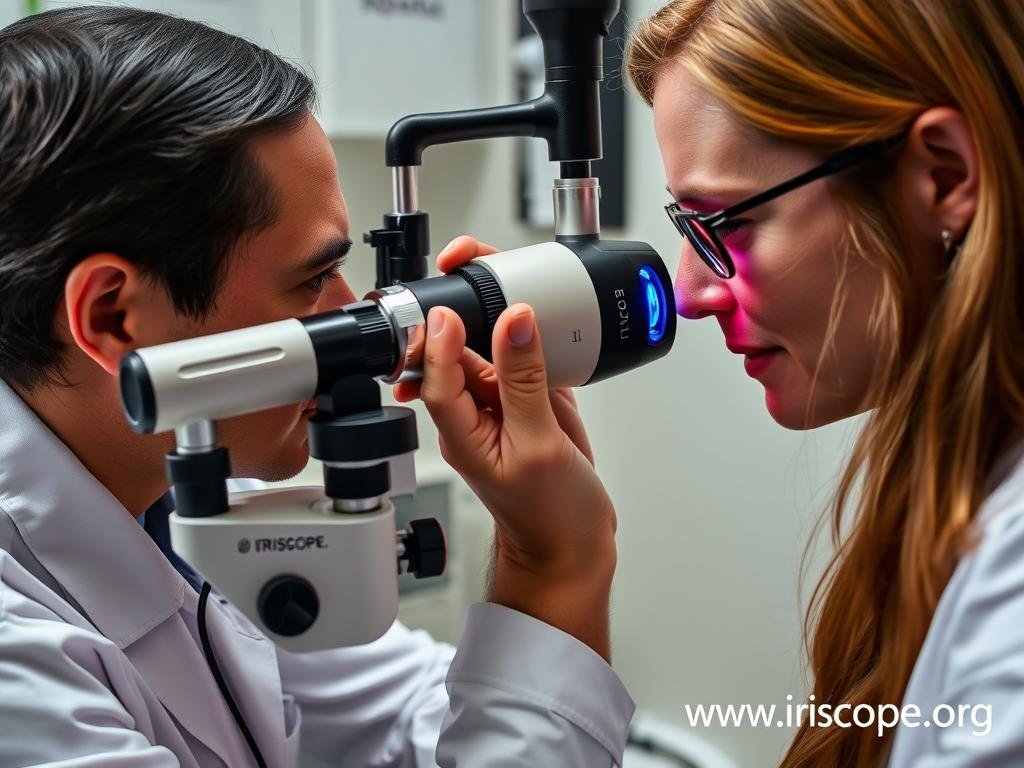
Historical Development of عبادت
عمل ایریدولوژی has a rich history dating back centuries. The first explicit description of iridological principles appears in Chiromatica Medica, published in 1665 by Philippus Meyeus. However, modern iridology is often attributed to Dr. Ignaz von Peczely, a 19th-century Hungarian physician who is recognized as its founding father.
According to historical accounts, von Peczely’s interest began when he noticed changes in the iris of an owl with a broken leg. This observation led him to develop the first comprehensive iris chart correlating iris signs with specific health conditions. The practice gained further momentum in the United States during the 1950s, when Bernard Jensen, an American chiropractor, began teaching his own method of iris analysis.
Conventional Eye Exams Explained
Conventional eye examinations are medical procedures designed primarily to assess visual acuity and detect eye diseases. These exams are conducted by licensed eye care professionals such as ophthalmologists and optometrists who have completed extensive medical training.
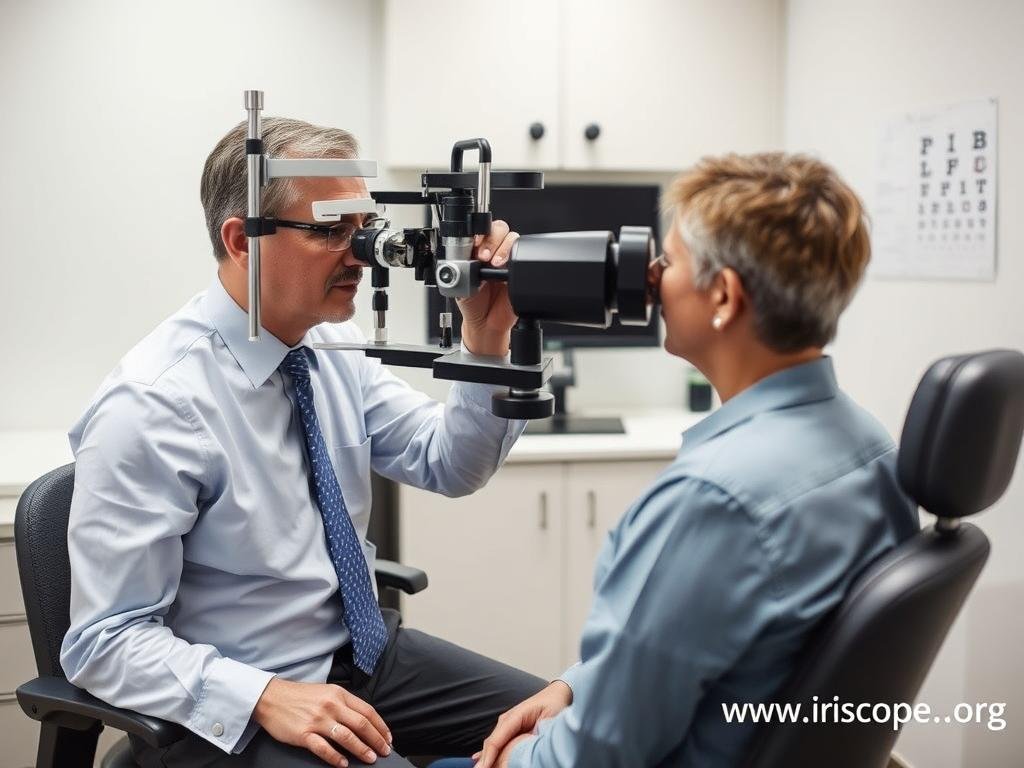
A typical comprehensive eye examination includes:
- Visual acuity testing using eye charts
- Refraction assessment to determine lens prescription
- Eye muscle movement evaluation
- Pupil response testing
- Peripheral vision assessment
- Intraocular pressure measurement for glaucoma screening
- Examination of the front structures of the eye using a slit lamp
- Retinal examination to assess the back of the eye
These examinations focus primarily on eye health and vision correction rather than using the eye as a window to overall systemic health, though some systemic conditions like diabetes and hypertension can be detected through eye examinations.
Key Differences Between عبادت and Conventional Exams
| جنبه |
عبادت |
Conventional Eye Exams |
| Primary Purpose |
Assess overall systemic health |
Evaluate vision and eye health |
| تمرکز |
Iris patterns, colors, and markings |
Visual acuity and eye structures |
| Practitioners |
Iridologists, some naturopaths |
Ophthalmologists, optometrists |
| Medical Recognition |
Limited in conventional medicine |
Widely accepted medical practice |
| تجهیزات |
Iriscope, specialized cameras |
Phoropter, tonometer, slit lamp |
| Outcome |
Health assessment, constitutional analysis |
Vision prescription, eye disease diagnosis |
دامنه تشخیصی
The fundamental difference between iridology and conventional eye exams lies in their diagnostic scope. Iridology aims to assess the entire body’s health through iris analysis, while conventional exams focus specifically on vision quality and eye health.
Iridologists claim they can identify:
- Inflammation in various body systems
- Toxin accumulation
- Nutritional deficiencies
- Organ strengths and weaknesses
- Constitutional predispositions
Conventional eye exams, by contrast, are designed to detect:
- Refractive errors (nearsightedness, farsightedness, astigmatism)
- Eye diseases (glaucoma, cataracts, macular degeneration)
- Visual processing issues
- Some systemic diseases with ocular manifestations
Tools and Techniques
The equipment and methodologies used in these two approaches differ significantly:
Iridology Equipment
- اریسکوپ – specialized microscope for iris examination
- High-resolution iris cameras
- Iris analysis software
- Detailed iris charts for reference
Conventional Eye Exam Equipment
- Phoropter – measures refractive error
- Tonometer – measures eye pressure
- Slit lamp – examines eye structures
- Ophthalmoscope – views retina and optic nerve
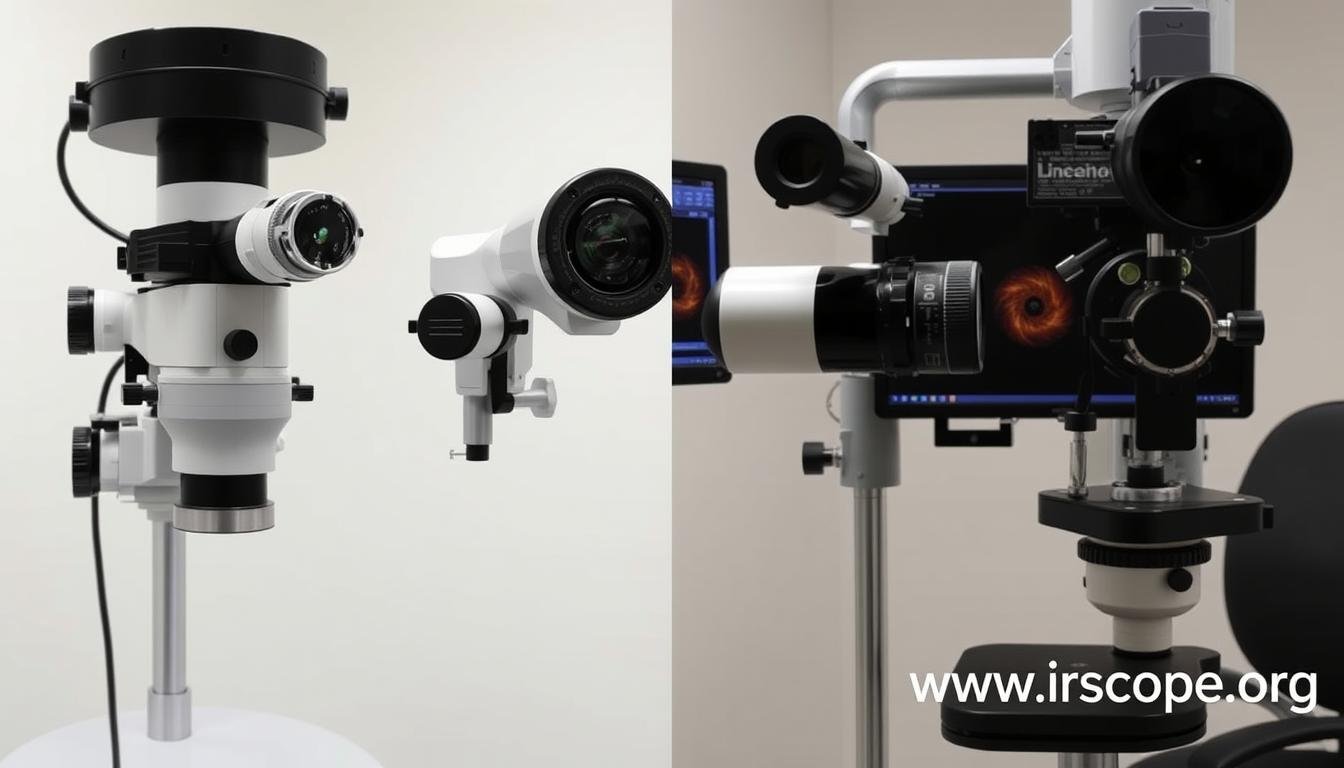
Medical Recognition
Perhaps the most significant difference between these approaches is their standing within the medical community:
Conventional Eye Exams
- Recognized by medical establishments worldwide
- Covered by health insurance
- Supported by extensive clinical research
- Practitioners require medical licensing
عبادت
- Considered alternative or complementary medicine
- Rarely covered by conventional insurance
- Limited scientific validation in peer-reviewed studies
- Varied practitioner certification standards
Pros and Cons of عبادت
Benefits of Iris Analysis
Proponents of iridology highlight several potential advantages:
- Holistic approach: Examines the body as an interconnected system rather than isolated parts
- Non-invasive: Requires no physical contact beyond examining the eye
- Preventative focus: May identify constitutional weaknesses before symptoms appear
- Complementary insights: Can work alongside conventional medicine to provide additional perspectives
- Historical foundation: Based on centuries of observational practice and pattern recognition
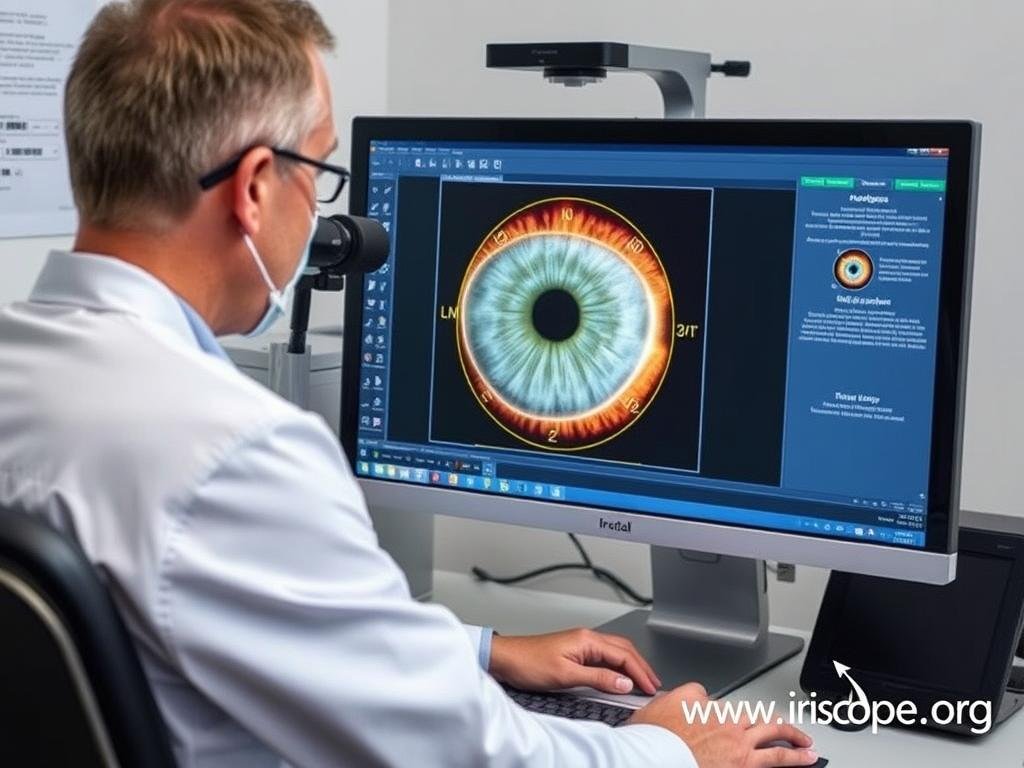
Limitations and Criticisms
Critics and scientific evaluations of iridology point to several limitations:
- Limited scientific validation: Few controlled studies support iridological diagnoses
- Iris stability: The iris is largely stable after infancy, with minimal structural changes
- Practitioner variability: Inconsistent training standards and interpretations
- Potential for delayed treatment: Risk of postponing conventional medical care
- Diagnostic specificity: Challenge in distinguishing between similar conditions
“While iridology offers an intriguing perspective on health assessment, it should be viewed as complementary to, rather than a replacement for, conventional medical diagnostics. The true value may lie in its holistic approach to understanding constitutional tendencies.”
– مجله اقدامات بهداشتی مکمل
Practical Applications: When to Choose Each Method
When Conventional Eye Exams Are Essential
- Vision correction needs (glasses, contacts)
- Eye pain or discomfort
- Suspected eye disease
- Regular preventative eye care
- Post-surgical monitoring
When عبادت May Provide Insights
- Interest in constitutional health assessment
- Complementary to conventional healthcare
- Exploring potential systemic imbalances
- Preventative health strategies
- Holistic health monitoring
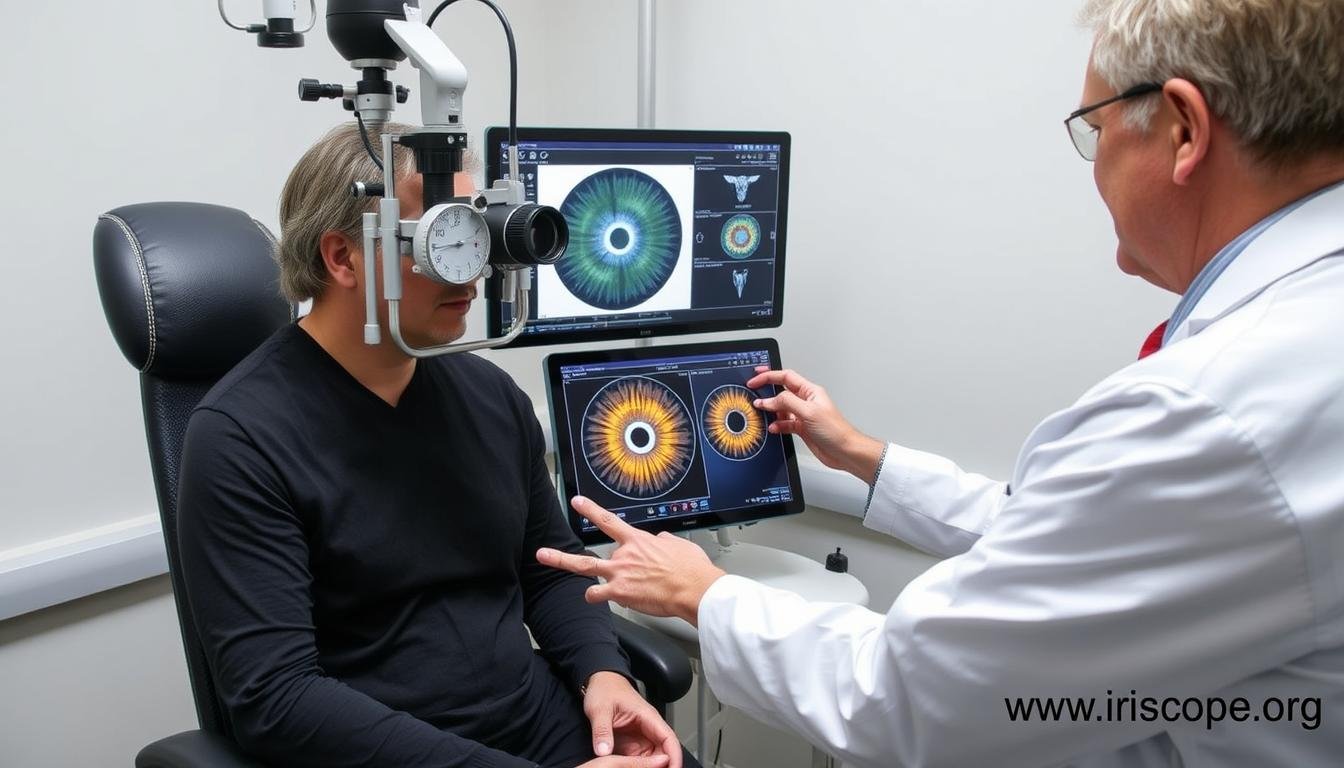
Interested in Learning More About Iridology?
Our team of experienced iridologists provides comprehensive iris analysis using state-of-the-art equipment. Discover what your iris may reveal about your health.
در واتساپ با ما تماس بگیرید
عبادت Equipment: Professional Tools for Iris Analysis
Professional iridology requires specialized equipment to capture and analyze the intricate details of the iris. Our company provides comprehensive solutions for practitioners and healthcare facilities.
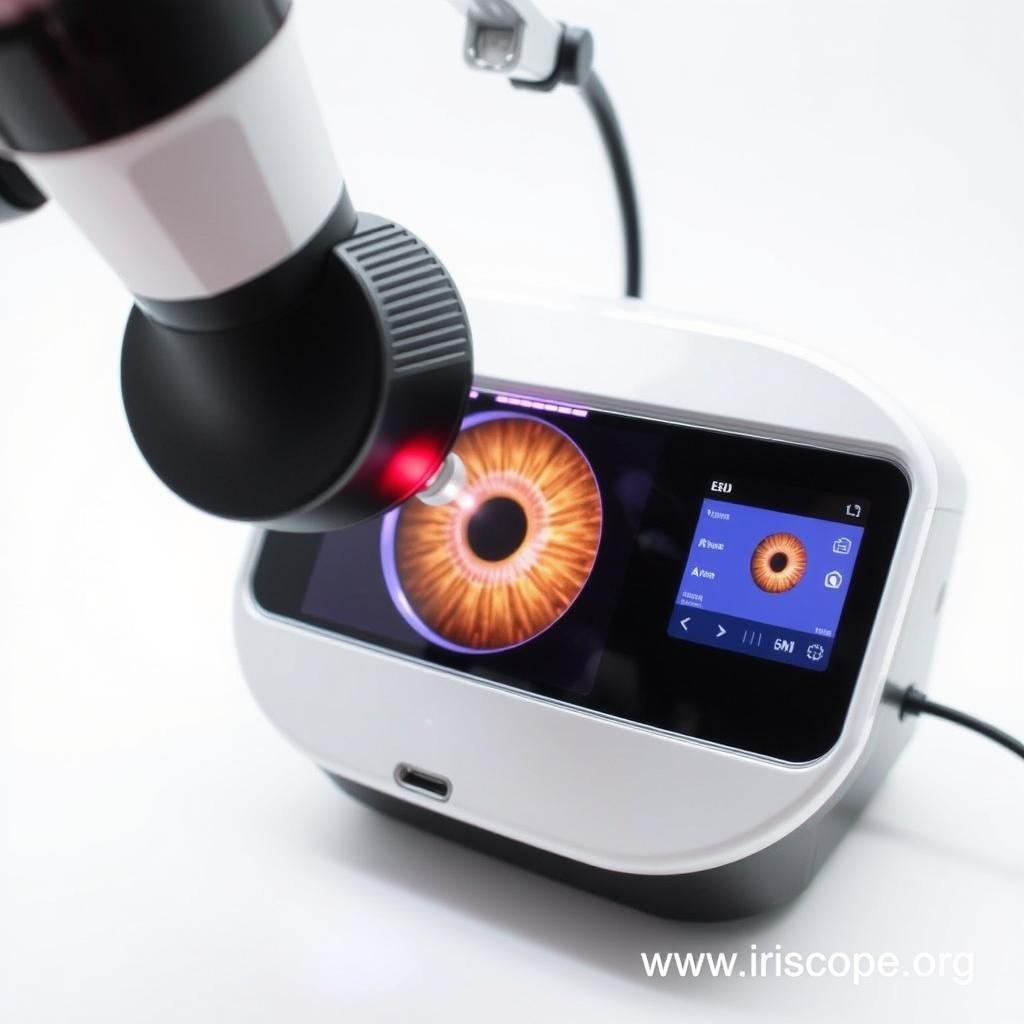
اریسکوپ
High-resolution magnification device specifically designed for detailed iris examination with adjustable lighting and digital capture capabilities.
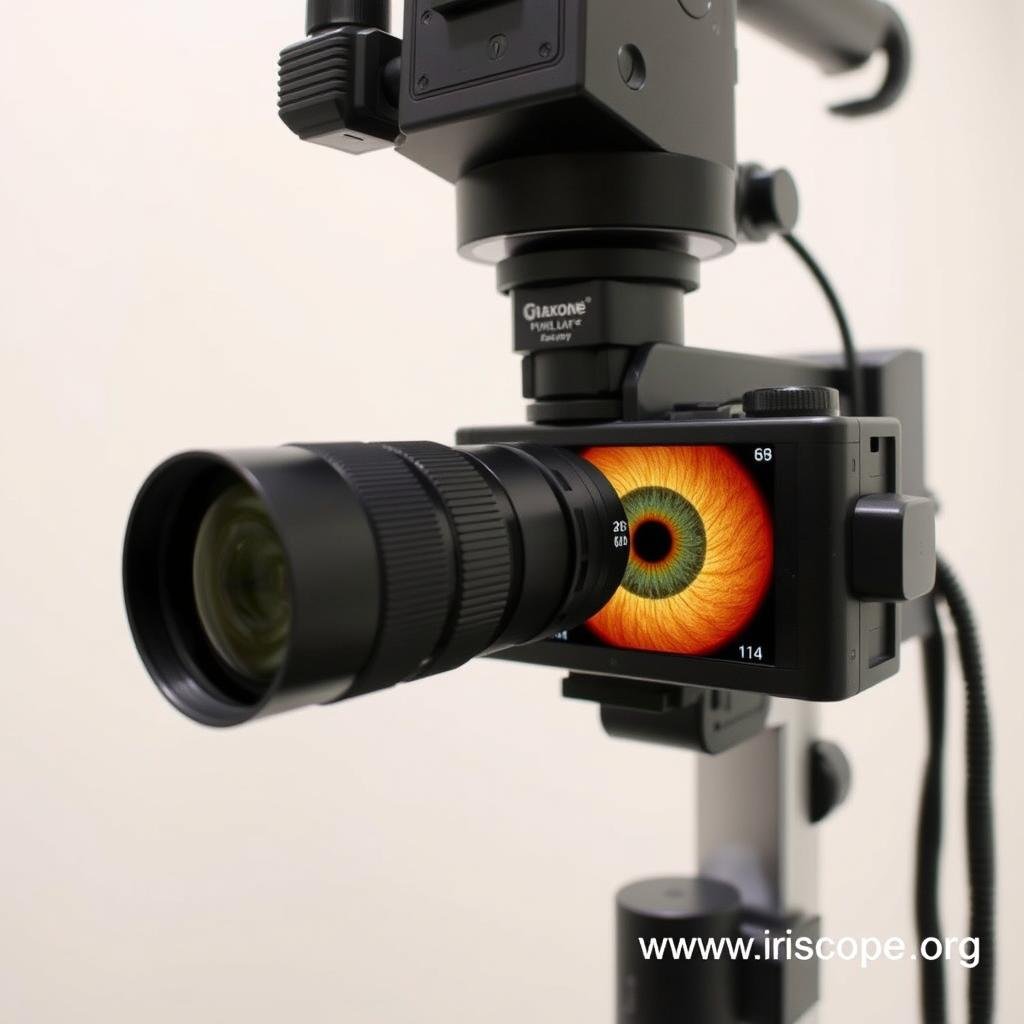
دوربین ایریدولوژی
Specialized digital cameras with macro capabilities for capturing high-definition images of the iris for detailed analysis and documentation.
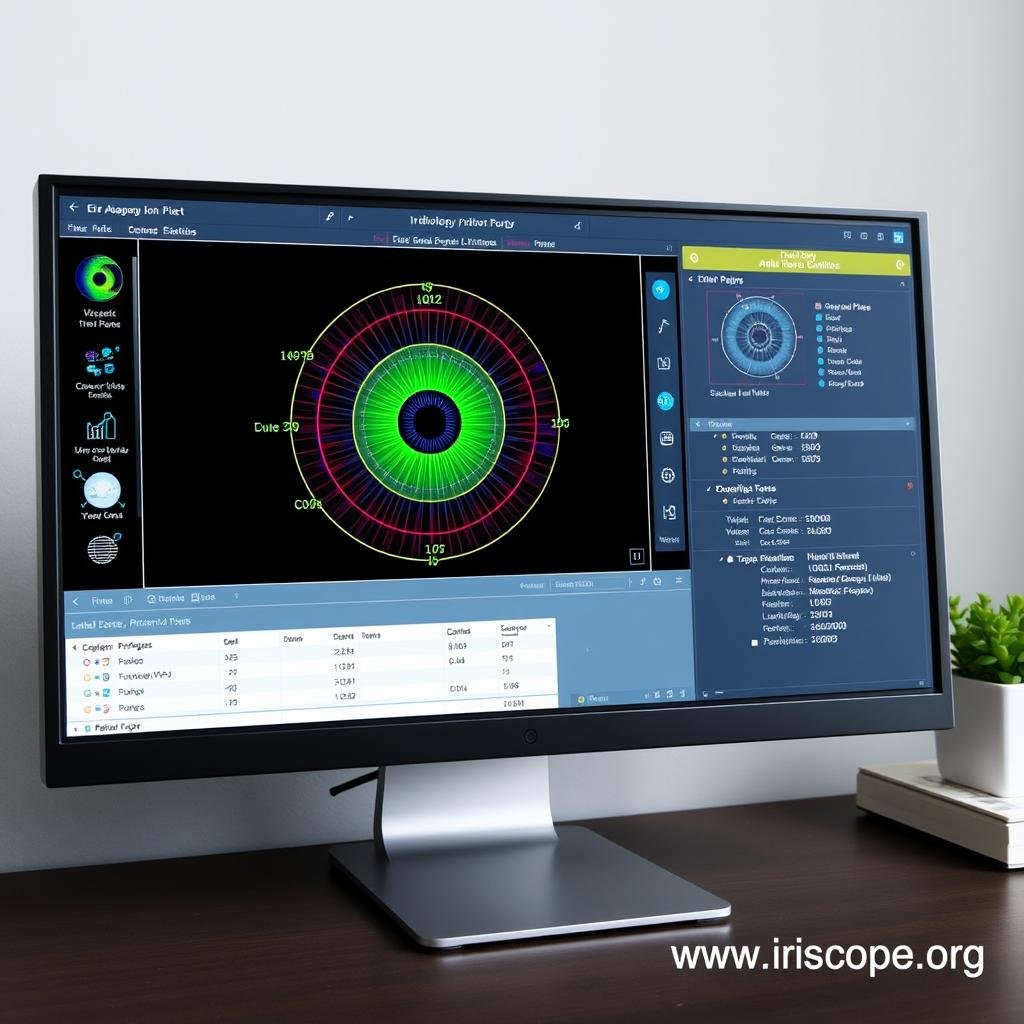
نرم افزار
Advanced analysis programs that map iris features to body systems, store patient records, and assist in comprehensive health assessments.
تجهیزات ایریدولوژی حرفه ای
We offer customizable, high-quality iridology equipment for practitioners worldwide. Contact us for product information, demonstrations, and global distribution options.
ایمیل برای اطلاعات تجهیزات
سوالات متداول در مورد عبادت
Is iridology scientifically validated?
Iridology has limited validation in conventional scientific literature. While some observational studies suggest correlations between iris features and certain health conditions, controlled clinical trials have shown mixed results. Many practitioners view it as a complementary assessment tool rather than a definitive diagnostic method.
Can iridology replace conventional medical diagnosis?
No, iridology should not replace conventional medical diagnosis. It is best viewed as a complementary approach that may provide additional insights into constitutional tendencies and potential health imbalances. Any significant health concerns identified through iris analysis should be followed up with appropriate medical evaluation.
جلسه Iridology به طور معمول چه مدت طول می کشد؟
A comprehensive iridology assessment typically takes between 30-60 minutes. This includes the initial iris examination, analysis of findings, and discussion of results. Follow-up sessions are usually shorter, focusing on changes and progress.
What training do iridologists receive?
Training for iridologists varies widely. Professional iridologists typically complete specialized courses ranging from several months to years of study. Many have backgrounds in naturopathy, traditional Chinese medicine, or other holistic health disciplines. When choosing an iridologist, inquire about their specific training, certification, and experience.
آیا ایریدولوژی می تواند شرایط جدی پزشکی را تشخیص دهد؟
Iridology is not designed to diagnose specific diseases but rather to identify constitutional strengths and weaknesses in body systems. While some iridologists claim to detect signs of serious conditions, these observations should always be verified through conventional medical testing and diagnosis.
Conclusion: Integrating عبادت and Conventional Approaches
The differences between iridology and conventional eye examinations reflect their distinct purposes and philosophical foundations. While conventional eye exams remain essential for vision correction and eye disease detection, iridology offers a complementary perspective that examines the relationship between iris features and overall health.
For those interested in a holistic approach to health assessment, iridology may provide valuable insights when used alongside conventional medical care. The key is understanding the appropriate application and limitations of each method.
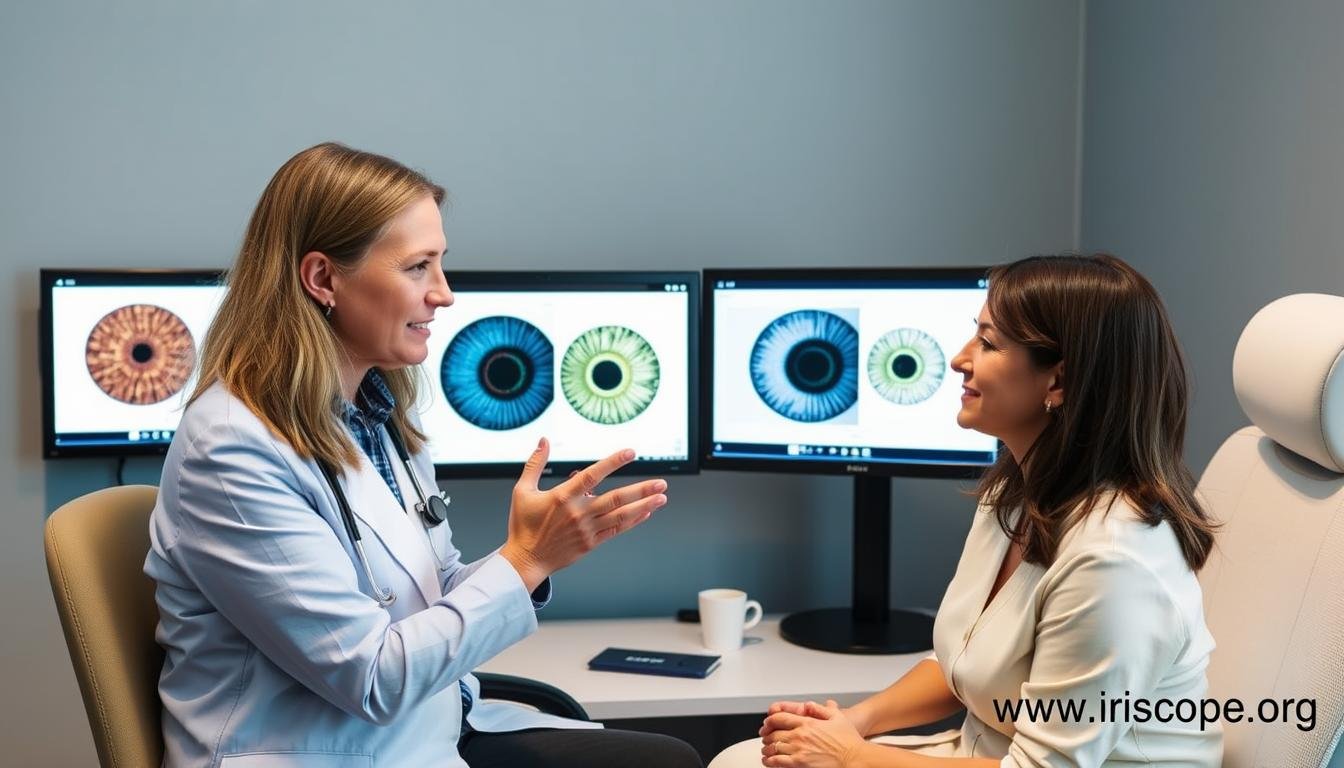
Experience Professional Iridology Analysis
Discover what your iris may reveal about your health with our comprehensive iridology assessment. Our experienced practitioners use state-of-the-art equipment to provide detailed analysis and personalized insights.

























